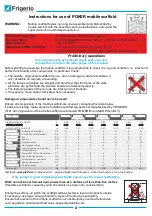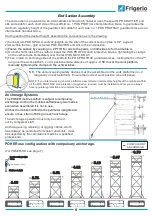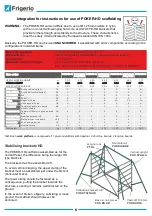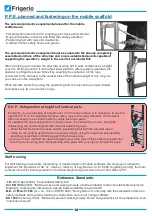
8
Instructions for movements
Movements are only permitted on perfectly flat and smooth
surfaces, and in the total absence of wind.
To move the mobile scaffold, the brackets must be lifted,
but not more than 12 millimetres.
Movements can only take place longitudinally or diagonally to
plan. With unilateral widening of the base with the wall support,
movement is only permitted if carried out parallel to the wall.
Mobile scaffold towers can only be manually moved and only on compact,
smooth surfaces free of obstacles.
Nobody or no objects must remain on the mobile platform during movement.
Furthermore, nobody must be within the range of one and a half times the height of the
mobile scaffold.
During movement, do not exceed walking speed.
Avoid all destabilising impacts, therefore pay attention to obstacles on the ground and in
the air. Always keep at least five metres from high voltage cables.
The surface on which the tower is moved must be capable of supporting the weight.
After each movement, braking and stabilising the mobile scaffold is
compulsory. Also check it is perfectly vertical.
It is forbidden to exceed 30 kg horizontal load
per person, pushing with work equipment, such as drills, etc.
Ladder Component Assembly
The ladder component (optional) allows you to work on seriously uneven surfaces, up to 80 cm, such as indoor
stairs. The component is composed of two legs with adjustable telescopic extension using a through pin.
The legs are fastened using the
specific clamps on the vertical
tubes of the base section and can
be orientated as necessary.
Firmly tighten the clamps on the
uprights of the support bar of the
base span (see drawing to side).
To ensure against vertical sliding,
the clamps must be fastened under
the horizontal crossbeams.
Level by sliding the telescopic tubes
and block them using the relevant
pins. Assemble the stabilising
brackets as per the configuration
used.
Note:
when the ladder component is being used, it is compulsory to anchor the mobile scaffold.
m
2
.6
2
YES
m 3.43
NO
YES


































